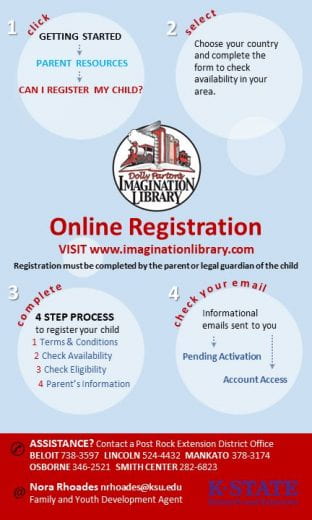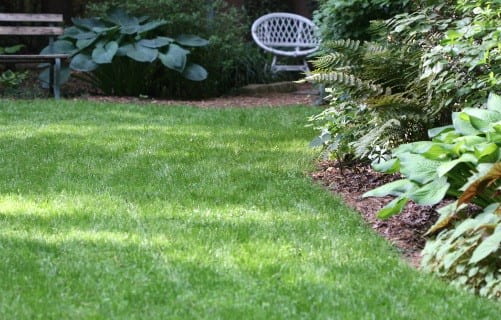Peonies are a favorite perennial of gardeners because of their beauty and low maintenance. In Kansas, peonies provide a beautiful display of flowers each spring around Memorial Day. Though peonies can be left in place indefinitely, many gardeners wish to increase their plantings and use a process known as division to accomplish this. Keep in mind, however, that peonies often take about three years to return to full bloom and size after division.
Fall is  the traditional time to divide these plants. Peonies are essentially dormant by mid-August even though the foliage is still green. The first step in division is to remove the foliage. Then dig out the entire plant. Shake and wash off as much soil as possible so that the pink buds or “eyes” are visible. Peony roots are tough, and a sharp knife is needed to cut the roots into separate pieces. Make sure each division has three to four buds. Make sure the location chosen for planting receives at least a half-day of full sun. However, the more sun, the better. Space the plants so that there is at least 2 feet between dwarf types and 4 feet between the standard types.
the traditional time to divide these plants. Peonies are essentially dormant by mid-August even though the foliage is still green. The first step in division is to remove the foliage. Then dig out the entire plant. Shake and wash off as much soil as possible so that the pink buds or “eyes” are visible. Peony roots are tough, and a sharp knife is needed to cut the roots into separate pieces. Make sure each division has three to four buds. Make sure the location chosen for planting receives at least a half-day of full sun. However, the more sun, the better. Space the plants so that there is at least 2 feet between dwarf types and 4 feet between the standard types.
Follow the same rules for planting these divisions as you do for new plants. Make sure the pink buds are about 1 inch below the soil surface. If they are set more than 2 inches deep, flowering may be delayed or completely prevented. As you set the plants, firm soil often as it is added around the plant. If the soil is not firmed, it can settle and pull the plant down with it. Water in well after planting and water as necessary through the fall and winter to keep the soil moist.
It is often a good idea to add mulch to the new planting to protect it from heaving. The alternate freezing and thawing that commonly occurs during Kansas winters can “heave” weakly rooted plants out of the ground. Add a mulch of straw, leaves, compost or other material after the soil freezes. Remember, it is not the cold that harms these plants but the alternate freezing and thawing of the soil.
By: Cassie Homan
 Each school year, the Post Rock District team offers a variety of opportunities to collaborate with educators and community leaders. Our supplemental activities will provide hands-on learning for students and help you meet academic standards. Youth enrichment offerings are scheduled with the presenting agent on a first come, first serve basis throughout the school year. To view the 2019-2020 youth enrichment offerings contact your local Post Rock District Office or visit www.postrock.ksu.edu under 4-H Youth Development.
Each school year, the Post Rock District team offers a variety of opportunities to collaborate with educators and community leaders. Our supplemental activities will provide hands-on learning for students and help you meet academic standards. Youth enrichment offerings are scheduled with the presenting agent on a first come, first serve basis throughout the school year. To view the 2019-2020 youth enrichment offerings contact your local Post Rock District Office or visit www.postrock.ksu.edu under 4-H Youth Development. the traditional time to divide these plants. Peonies are essentially dormant by mid-August even though the foliage is still green. The first step in division is to remove the foliage. Then dig out the entire plant. Shake and wash off as much soil as possible so that the pink buds or “eyes” are visible. Peony roots are tough, and a sharp knife is needed to cut the roots into separate pieces. Make sure each division has three to four buds. Make sure the location chosen for planting receives at least a half-day of full sun. However, the more sun, the better. Space the plants so that there is at least 2 feet between dwarf types and 4 feet between the standard types.
the traditional time to divide these plants. Peonies are essentially dormant by mid-August even though the foliage is still green. The first step in division is to remove the foliage. Then dig out the entire plant. Shake and wash off as much soil as possible so that the pink buds or “eyes” are visible. Peony roots are tough, and a sharp knife is needed to cut the roots into separate pieces. Make sure each division has three to four buds. Make sure the location chosen for planting receives at least a half-day of full sun. However, the more sun, the better. Space the plants so that there is at least 2 feet between dwarf types and 4 feet between the standard types. We were meant to move, and when we do we reap the benefits! Capitalizing on opportunities throughout our day to maximize movement will help us move more without even realizing that we are doing just that. Take a minute to think about the modern day conveniences we use to reduce the amount of physical activity we do. Cars, dishwashers, automatic car washes, push button garage door openers, TV remotes, riding lawnmowers, the list goes on and on! The more we use these modern day conveniences the less we move, which is detrimental to our health in countless ways. Let’s challenge ourselves to move more each day. Let’s walk to work or to run errands instead of driving, hand wash dishes, push mow our lawns, and play games with our friends and family that encourage movement. There’s no better time than now to get moving and feeling great!
We were meant to move, and when we do we reap the benefits! Capitalizing on opportunities throughout our day to maximize movement will help us move more without even realizing that we are doing just that. Take a minute to think about the modern day conveniences we use to reduce the amount of physical activity we do. Cars, dishwashers, automatic car washes, push button garage door openers, TV remotes, riding lawnmowers, the list goes on and on! The more we use these modern day conveniences the less we move, which is detrimental to our health in countless ways. Let’s challenge ourselves to move more each day. Let’s walk to work or to run errands instead of driving, hand wash dishes, push mow our lawns, and play games with our friends and family that encourage movement. There’s no better time than now to get moving and feeling great! The Dolly Parton Imagination Library is a literacy program for children ages birth to five who are residents of a county with an active program. All counties in the Post Rock Extension District have an active program. These counties include Jewell, Lincoln, Mitchell, Osborne and Smith. Books received through the program are a free gift! There is no cost or obligation to your family. The Dane G. Hansen Foundation graciously provides financial support for the local programs.
The Dolly Parton Imagination Library is a literacy program for children ages birth to five who are residents of a county with an active program. All counties in the Post Rock Extension District have an active program. These counties include Jewell, Lincoln, Mitchell, Osborne and Smith. Books received through the program are a free gift! There is no cost or obligation to your family. The Dane G. Hansen Foundation graciously provides financial support for the local programs. If you only fertilize your cool season lawn once a year, September is the best time to do it. Do you know the best practices to keep your lawn looking great? Here is an excellent cool season lawn care guide and calendar:
If you only fertilize your cool season lawn once a year, September is the best time to do it. Do you know the best practices to keep your lawn looking great? Here is an excellent cool season lawn care guide and calendar: Bouncing from one activity to the next finds families traveling to ball games, lessons, appointments, and more. Once you reach your destination you may find yourself playing the waiting game. “In between time” can be a great opportunity to get back to the basics of learning with your loved ones. Here’s some gadget-free ideas that will help keep minds learning, loved ones communicating, and time passing with enjoyment:
Bouncing from one activity to the next finds families traveling to ball games, lessons, appointments, and more. Once you reach your destination you may find yourself playing the waiting game. “In between time” can be a great opportunity to get back to the basics of learning with your loved ones. Here’s some gadget-free ideas that will help keep minds learning, loved ones communicating, and time passing with enjoyment: